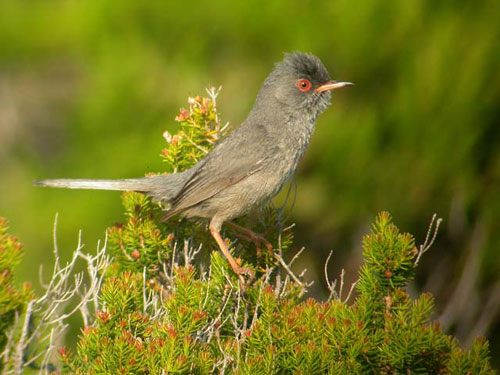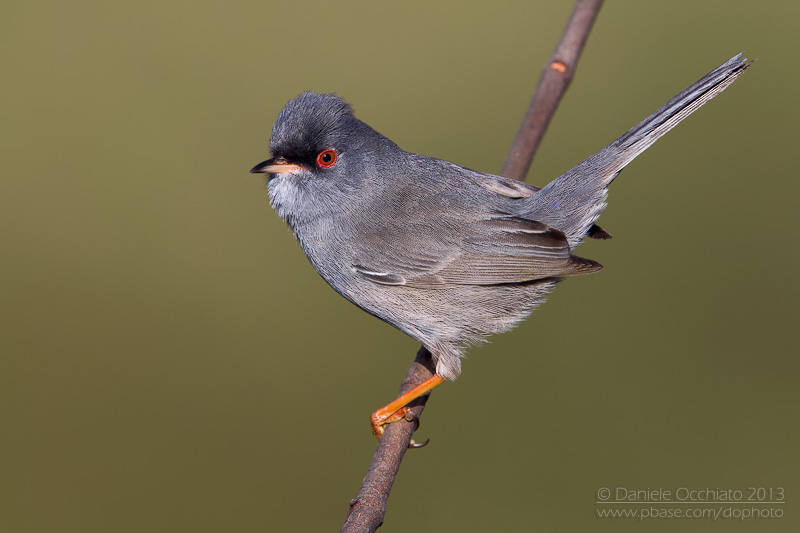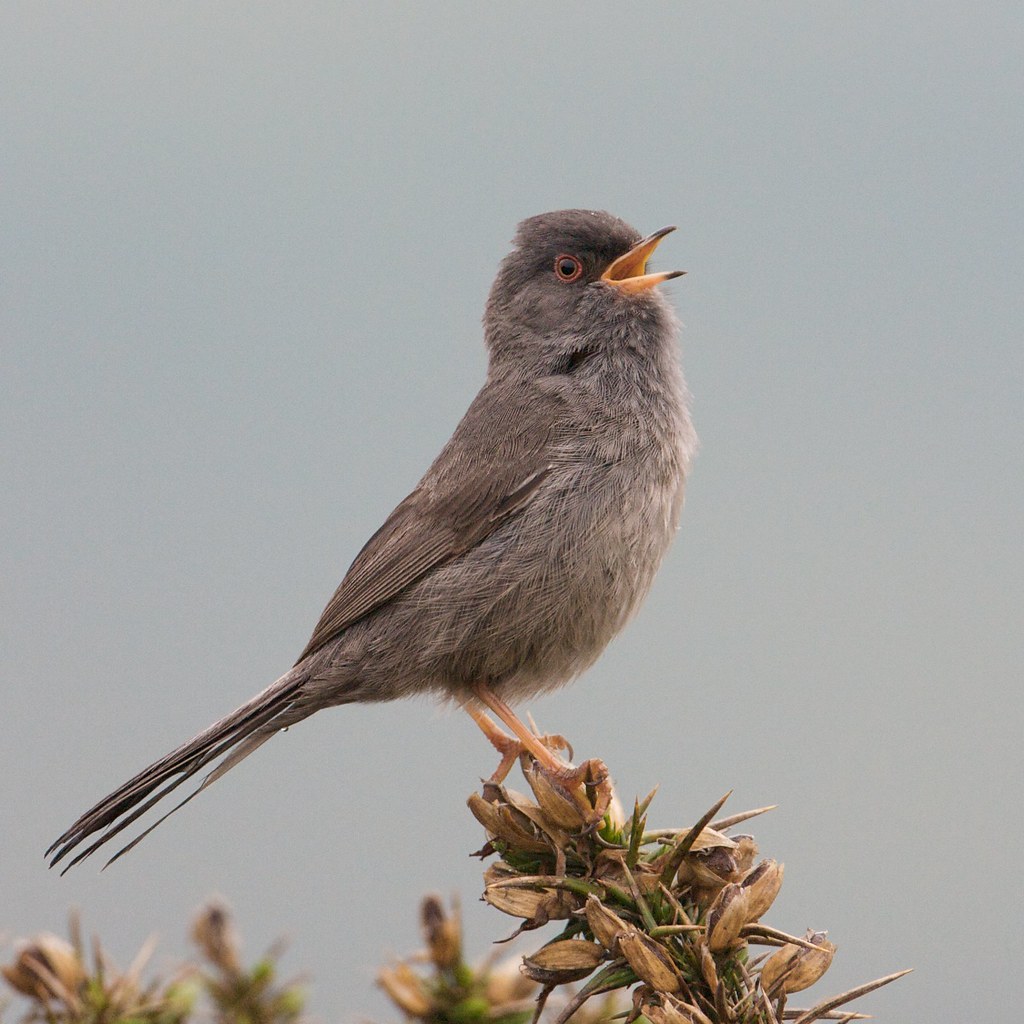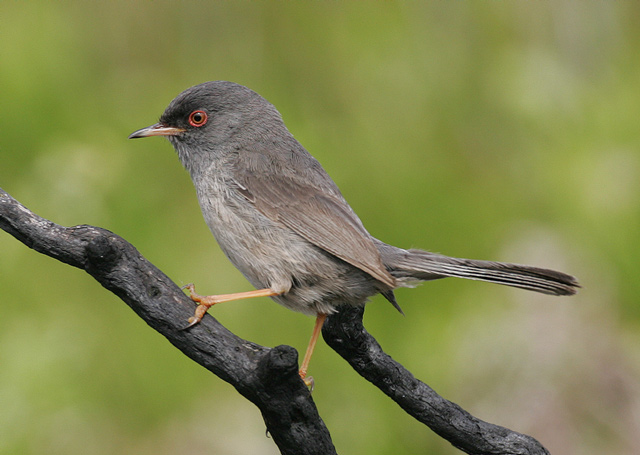Marmora's Warbler
Sardengrasmücke (Sylvia sarda )
The Sardengrasmücke (Sylvia sarda ) is a Singvogelart from the genus of warblers (Sylvia ). It occurs in the Balearic Islands, Corsica and Sardinia.
Features
The Sardengrasmücke similar in size, shape and behavior of the Dartford warbler. From this it differs in the gray underside, as well as the lack of light throat patch.
The male is uniformly smoky gray, with the exception of the lighter throat. The bill basis, the iris and the legs are red. The female is bright, dull but also without a trace of brown. This species has a body length of 13-16 cm and a wingspan of 25-30 centimeters.
Occurrence
The Sardengrasmücke breeding on the islands of the Balearic Islands, with the exception of Menorca. Furthermore, it breeds on Corsica and Sardinia, Capri, Elba and Pantelleria and the Tunisian island Zembra. Various evidence with breeding suspicion in the area of the Aegean Sea from the 90s require further investigation. While the population is in the Balearic Islands of resident birds, pull the birds of the eastern subspecies for the winter to northern Africa. The Sardengrasmücke usually comes to an altitude of 500 meters above, but they can be found in the mountain regions of Corsica and Sardinia and up to an altitude of 1800 meters.
It breeds on mountain slopes with low scrub and garrigue, and on rocky shores in the bushes of heather and rock roses, but not in forests.
Behavior
The Sardengrasmücke usually occurs in pairs or alone. Only in autumn and winter, they form small groups. They search for their food, which consists of insects, spiders and other invertebrates, in foliage close to the ground.
Reproduction
The Sardengrasmücke breeds twice a year. In April to May and a second time in June. The three or four eggs are incubated at 12 to 13 days. The young leave the nest after 12 days.
Internal system
It describes two subspecies, of which the Balearic sometimes as Balearic Warbler (Sylvia balearica of Jordan 1913) is made which then forms a superspecies with S. sarda. This is justified by differences in size, coloration, song and migratory behavior, and analysis of mitochondrial DNA. However, the fairly minor morphological differences do not seem to justify species status necessarily the migratory behavior can hardly be regarded as a taxonomic feature and the molecular genetic studies are unpublished for several years. More remains to be seen.
- See S. sarda - Sardinia and Corsica
- P s Balearica - Balearic Islands, Menorca except










